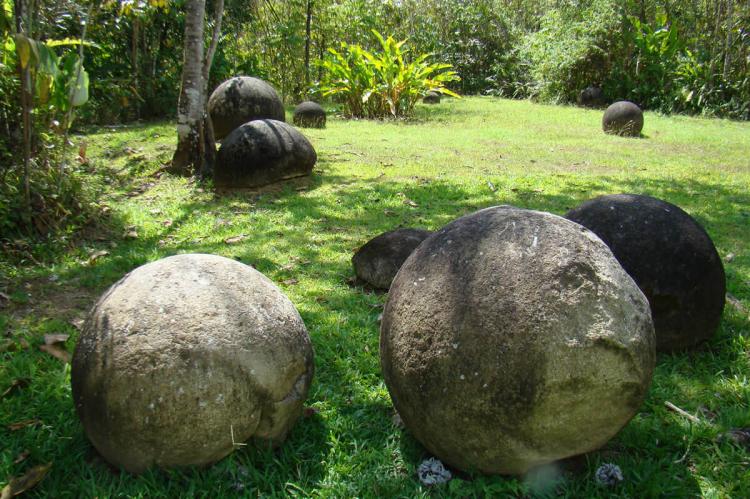Stone Spheres of the Diquís (Costa Rica)
The stone spheres of the Diquís are a collection of over three hundred petrospheres located on the Diquís Delta and Isla del Caño in Costa Rica. The spheres, located in four archaeological sites, comprise a UNESCO World Heritage Site and are a popular tourist destination.
Stone Spheres of the Diquís
The stone spheres of the Diquís are an assortment of over three hundred petrospheres located on the Diquís Delta and Isla del Caño in Costa Rica. Locally, they are known as bolas de piedra ("stone balls"). The spheres range from a few centimeters to over 2 m (6.5 ft) in diameter, weighing up to 16 tons.
They are the best-known stone sculptures of the Isthmo-Colombian area. The spheres are attributed to the extinct Diquís culture, which flourished from 500 to 1500 CE. The Diquís people were a complex society with a sophisticated political and economic system. They were also skilled stoneworkers; the spheres are a testament to their artistry.
The purpose of the spheres is unknown, but there are several theories. Some believe they were used as astronomical markers, while others believe they were used for religious or ceremonial purposes. There is also some speculation that the spheres were used as sling stones or gaming pieces.
The spheres were discovered in the 1930s by workers clearing land for banana plantations. The spheres were initially dismissed as curiosities, but they soon attracted the attention of archaeologists. Since their discovery, the spheres have been the subject of extensive research.
Despite the research, the purpose of the spheres remains a mystery. However, they are a fascinating and enigmatic part of Costa Rican culture. They are a testament to the ingenuity and artistry of the Diquís culture and continue to fascinate and intrigue people worldwide.
World Heritage Site
The spheres comprise a UNESCO World Heritage Site and a popular tourist destination. The four archaeological sites that make up the "Pre-Columbian Chiefdom Settlements with Stone Spheres of the Diquís" World Heritage Site include:
-
Finca 6: This site is located in the Diquís Delta and is the most extensive of the four sites. It contains over 200 spheres, artificial mounds, paved areas, and burial sites.
-
Batambal: This site is located near the town of Palmar Sur and contains about 50 spheres. It is thought to have been a ceremonial center.
-
El Silencio: This site is located near the town of Sierpe and contains about 30 spheres. It is thought to have been a residential area.
-
Grijalba-2: This site is located near the town of Osa and contains about 20 spheres. It is thought to have been a trading center.
